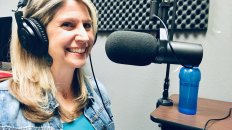In this episode, host Jennifer Russell explores Evidence Based Practices, or EBPs, that can transform your classroom.
Audio Transcript
Download the full audio transcript
Jennifer Russell:
Hey everybody, you’re listening to Life Skills Radio. I’m your host, Jennifer Russell, and today we’re going to be spending a little bit of time talking about some evidence based practices or EBPs that can transform your classroom. So what are evidenced based practices and why do we use them?
Well, first let’s talk about the why. We need to use EBPs because we’re mandated. The Every Student Succeeds Act, or ESSA, calls for the use of evidence based interventions as the foundation for classroom instruction. Okay, great. Got It. Now we know why. But what are evidenced based practices? Here’s a definition that I think does a pretty good job of explaining what an EBP is and isn’t and bear with me because I’m about to lay some pretty dry content on you. ASHA, or the American Speech Language Hearing Association, states that the goal of an evidence based practice or EBP is to integrate clinical expertise or expert opinion with external scientific evidence and client/patient or caregiver perspectives to provide high quality service.
Confused? Visualize an EBP as a three legged stool. The seat part of the stool is the evidence based practice or strategy. And what holds up the seat? The three legs. One leg represents clinical or teacher expertise. Another leg represents external scientific evidence or data. And the third leg represent student and family perspectives. If one of the legs is weak or missing, the stool won’t stand up. In other words, the strategy might not be an EBP for that student. For example, using sign language to increase communication might be an evidenced based practice that a teacher wants to use with one of her students. The teacher has taken some data on effectiveness. She’s read up on research. She’s well trained on implementation. So the two legs that address scientific evidence and teacher expertise are strong. But what if parents feel that they don’t want to implement sign language at home?
What if they feel like their child would do better with a core vocabulary board or a device? If the teacher fails to consider the parent’s perspective, using sign language to increase communication might not be an EBP for that student. We need all three legs of the stool to be able to truly say that an EBP is effective for an individual student. Make sense?
But how do we determine which ones to learn about and use first? There’s so many. The National Professional Development Center on Autism has identified 27 EBPs that have been shown to be effective in educating students with autism. And the council for exceptional children, together with the Collaboration For Effective Educator Development Accountability And Reform known as CEEDAR, developed and published a set of 22 high leverage practices for special educators. That’s great information but also a tad overwhelming when you’re just starting out. My partner Darcy likes to use the analogy of her husband working on projects in the garage to illustrate the process of choosing which EBPs to focus on implementing and mastering first.
She says that her husband has a garage full of tools. He has lots of big complicated tools such as his air compressor, his pressure washer, and lots of others that she told me about, but I can’t remember because I’m the very opposite of handy. Anyway, she says that no matter what project he’s working on, he uses the same five to seven tools that he carries on his tool belt, his hammer, his screwdrivers, pliers, wrench, and a tape measure. He uses these tools most often for the most jobs and uses them along with the other tools in the garage which make them high leverage tools.
So as educators we have our toolbox, which is full of wonderful strategies, and from that toolbox we take out the five to seven tools or EBPs that we know are going to work most often for the most students in the most settings for the most outcomes. And those are the ones that go on our tool belt….
Download full transcript
Checkout the rest of the lifeskills series
Jennifer Russell is an education specialist for the Early Childhood Special Education team here at the Education Service Center Region 13.









[…] Education Research show that former “best practices” don’t always stand the test of time. Great teachers recognize these changes and adjust their existing classroom framework. Why then, do so many teachers keep outdated resources that take up precious space in their classroom? […]